Of the names of the 263 communities and neighbourhoods that have been identified to date in Calgary, 73 (27.8%) can be found in Scotland or are based on Scottish family names or Scottish words. Of course, some of the names are used in other parts of the British Isles as well but as many as 46 of them (17.5%) are unique to Scotland or are readily identifiable with places in Scotland that are based on the same names. Calgary itself is a Scottish place name, the city being named for Calgary Bay on the Isle of Mull.
Judging purely by the names of its subdivisions and neighbourhoods, Calgary can justifiably claim to be one of the most 'Scottish' of all the Canadian cities. Calgary's place names certainly illustrate the far-reaching effects of the Scottish diaspora, whether through direct immigration from Scotland or through migration from other parts of Canada by people with Scots ancestry.
Picture of Olympic Plaza, Calgary, via Wikipedia.
Communities and neighbourhoods with names that occur only in Scotland and not elsewhere in the British Isles, and/or are definitely, or most probably, of Scottish origin are:
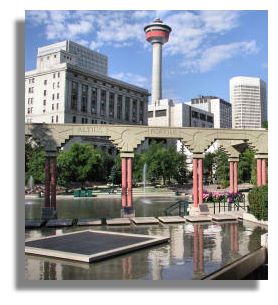
- Alyth - this small neighbourhood in the Inglewood area takes its name from a former CPR railway station that had been named for the town of Alyth in Perth & Kinross. The name is also perpetuated by the bridge over the railway tracks as well as some of the streets in the neighbourhood (Alyth Court, Alyth Place and Alyth Road).
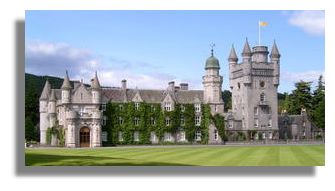
- Balmoral (Balmoral Castle, the royal residence on the river Dee in Aberdeenshire - illustrated here). According to Donna Mae Humber (1994, Vol II, pp. 21-22), an authority on Calgary place names, the name of this neighbourhood was deliberately chosen to appeal to British and especially Scottish settlers during Calgary's real estate boom in the early twentieth century.
- Banff Trail (Banff in Aberdeenshire) but referring in this instance to the town of Banff in the foothills of the Rockies to the west of Calgary.
- Bonnybrook - this does not appear to be a place name in Scotland or elsewhere in the UK. The name has a partly Scottish ring about it through the word 'bonny' (meaning pleasant-looking) but 'brook' is essentially an English term.
- Braeside (Aberdeen City and Inverclyde). This neighbourhood takes its name from a farm owned by Tom P. Brown and his family. Brown was born in Dundee and came to Calgary in 1924 (Humber, 1994, Vol II).
- Calgary (Argyll & Bute) and South Calgary by association. Calgary was the name suggested by Colonel James F. Macleod in 1876 for the fort that had been built a year earlier. Colonel Macleod's relatives owned a small castle in Scotland called Calgary House, located on Calgary Bay on the Isle of Mull (Argyll & Bute). According to Ayto & Crofton (2005), the compilers of a new book on British and Irish place names, there are two possibilities for the origin of the name Calgary in Scotland. The name may be derived from two Gaelic words, 'caladh' and 'garaidh' ('the haven by the dyke') or alternatively from the Old Scandinavian personal name 'Kali' and 'geiri', suggesting 'Kali's triangular plot of land'.
- Cedarbrae - although there is no such place name in Scotland, the 'brae' element suggests a Scottish connection, brae (pronounced "bray") meaning a hillside or slope.
- Christie Park – there are at least two places in Scotland with this name (a park in Alexandria in the Vale of Leven, and a football ground in Huntly, Aberdeenshire) as well as Christielands in Dumfries & Galloway and Christie’s Hole in the Shetland Islands. This Scottish family name is also found just over the border, for example, Christies Bog in Northumberland and Christie Wood in North Yorkshire. The neighbourhood was named after the Christie family who operated the Ontario Laundry from 1903 to 1949, the biggest laundry operation west of Winnipeg (Humber, 1994, p. 39).
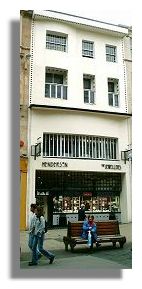
- Citadel (Orkney Islands). The name of this community is more likely descriptive of its prominent position overlooking the city rather than named for the place in Scotland but an indirect connection with the Orkney Islands cannot be ruled out. As pointed out by Humber (1994, Vol II, p. 46), "the name also reflects the names of other geographical features close to Calgary: Citadel Pass, Citadel Peak and Citadel Lake."
- Cranston - there is a Cranstonhill in Glasgow and a barony of Cranston in Midlothian. Miss Cranston's Tearooms (Sauchiehall Street's tearoom is shown here) were also well known in Glasgow at the end of the 19th century.
- Dalhousie (Dalhousie Burn, Castle, Chesters and Grange in Midlothian). The Calgary neighbourhood honours George Ramsay, the 9th Earl of Dalhousie and Governor-in-Chief of British North America from 1820 to 1828 (Humber, 1994, p. 49).
- Douglasdale Estates - Douglasdale is the valley in which Douglas Castle, South Lanarkshire, is located. The Douglas family, descendants of William de Duglas (late 12th Century) was one of the most powerful in Scotland. Douglasdale Estates supposedly took its name from the Douglas Range, an explanation which Humber (1994, Vol II) disputes. There are at least three mountains in Alberta bearing the name Douglas (Mount Douglas, Mount Sir Douglas, Howard Douglas Peak), any one of which may have provided the inspiration for the name of this neighbourhood.
- Douglas Glen and Douglas Ridge - there is a Douglas in South Lanarkshire (the original territorial base of the powerful Douglas family) as well as in Ireland and on the Isle of Man. As a family name, Douglas is typically Scottish. One wonders whether these Calgary neighbourhoods have any reference to the Douglas fir, the largest species of tree in Canada named after David Douglas, a Scottish botanist. The first Douglas Fir in Scotland, grown from a seed brought back by David Douglas, is shown here.
- Elgin (Moray). Elgin apparently means 'little Ireland' in Gaelic, a reminder of the days when Pictish Scotland was gradually being colonised by Celts from Ireland. This is one of Calgary's newest neighbourhoods, located in the McKenzie Towne area. The developers chose a Scottish theme, which is also reflected in neighbouring Inverness and Prestwick.
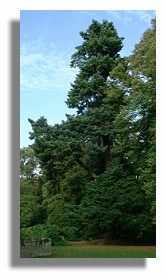
- Glencoe (Highland) - this name is etched into the Scottish psyche as the bleak glen in the Highlands where a party of MacDonald men, women and children was treacherously massacred by the Campbells (acting under government orders) in 1692. The name was deliberately chosen to appeal to Scottish settlers during Calgary's real estate boom in the early twentieth century. The illustration shows Glencoe in the Scottish Highlands.
- Glendale (Highland) and Glendale Meadows by association. Glendale was given its name by the developer, Ed Davis, who chose it for its marketability. The area has a small depression (glen or dale) created by the former course of the Bow River.
- Glengarry (Aberdeenshire and Highland). The Calgary neighbourhood was named for the ranch in the area owned by Thomas E. Jackson, which in turn recalls Glengarry in Ontario (the first Scottish settlement in Upper Canada).
- Grandview (Shetland Islands). Grandview was a popular name for neighbourhoods as well as streets in all English-speaking countries during the nineteenth and early twentieth centuries. In most instances, the name was applied to localities that literally afforded a wide panorama. This was definitely the reason for naming the Calgary neighbourhood, though it has since moved east of its original location (now called Ramsay).
- Highland Park - according to Humber (1994, Vol II), the name of this neighbourhood, which recalls the Highlands of Scotland, was deliberately chosen to appeal to Scottish settlers during Calgary's real estate boom in the early twentieth century (Balmoral and Glencoe were chosen for the same reason).

- Inverness (Highland) - the unofficial capital of the Highlands of Scotland. The illustration above shows Inverness Castle. This is one of Calgary's newest neighbourhoods, located in the McKenzie Towne area. The developers chose a Scottish theme, which is also reflected in neighbouring Elgin and Prestwick.
- Kelvin Grove (City of Glasgow, spelt Kelvingrove). This neighbourhood, established in 1960, was actually named after a farm in the area, but the origin of the farm's name was no doubt Scottish.
- MacEwan Glen - MacEwan is a Scottish clan, usually spelt MacEwen. The name of this community honours the late J. S. Grant MacEwan (1902-2000), Calgary historian, alderman and mayor, and Lieutenant Governor of Alberta from 1966 to 1974.
- McCall Industrial Park - McCall is a Scottish family name, originating in Ayrshire, the Lowlands and the Scottish Borders. The Calgary neighbourhood probably honours Freddie McCall, WWI flying ace, stunt flier and founder of the Calgary Aero Club, later known as the Calgary Flying Club (Humber, 1994, p. 111).
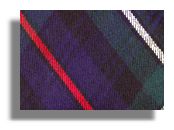
- McKenzie Lake and McKenzie Towne - there is a Mackenzie's Cairn in Highland based on this Scottish surname - that's the clan tartan shown here. James S. McKenzie was an early pioneer in what is now south-eastern Calgary, having come west from Montreal in 1882 (Humber, 1994, p. 112). Most of the neighbourhoods in the McKenzie Towne area bear Scottish names (Elgin, Inverness and Prestwick).
- Millican - one of many variations of the Scottish surname Milligan, along with Milliken, Millikin and Mullikin (there is a Millikenpark in Renfrewshire and places such as Milligansbush and Milliganton in Dumfries & Galloway). According to Black (1996), the authority on Scottish family names, these surnames are derived from the double diminutive of 'mael-oc-an' - 'the little bald or shaved one', probably alluding to the ancient Gaelic tonsure. The Calgary neighbourhood takes its name from Millican Estates, a sub-division named for Calgary lawyer and land developer W.J. Millican (Humber, 1994, p. 114).
- Patterson and Patterson Heights - these neighbourhoods were named for the H.S. Patterson family, owners of a large brick house in the area from 1947 to 1957. Patterson is a variant spelling of the Scottish family name of Paterson ('Patrick's son'). The Paterson clan was originally located on the north side of Loch Fyne in Argyll. Patterson, according to Black (1996), is one of the most common family names in Scotland.
- Point McKay - Clan MacKay began its rise to power in the 13th century, the name meaning 'son of fire' in Gaelic. The Calgary neighbourhood is named for Ontario-born Alfred McKay who worked as a ferryman at the site of the first ferry crossing on the Bow River (Humber, 1994, p. 129).
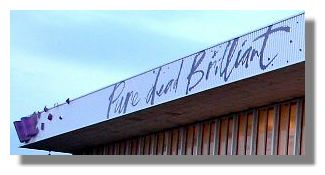
- Prestwick (a town in South Ayrshire, and the name of the international airport at this town, shown here with its modest slogan "Pure dead Brilliant"). Although Prestwick is also the name of a suburb in the greater Newcastle-upon-Tyne area in northern England, the fact that this new McKenzie Towne neighbourhood adjoins other new neighbourhoods that have definitely been given Scottish names strongly suggests a connection with Scotland rather than England.
- Ramsay (Ramsay Ness in the Orkney Islands). Ramsay is a Scottish surname, the Calgary neighbourhood being named for Silas Alexander Ramsay, mayor of Calgary in 1904 and 1905 (Humber, 1994, p. 134).
- Regal Terrace - there is a Regal Burn and Regal Hill in South Lanarkshire though this neighbourhood's name may have been chosen purely for its marketability.
- Renfrew (Renfrewshire). According to the Penguin Dictionary of British Place Names (Room, 2003) the name derives from two Brythonic Celtic words represented by modern Welsh 'rhyn' (point) and 'ffrwyd' (current). The 'point of the current' refers to the place where the Black and White Cart Waters enter the Clyde - at one time the highest navigable point on the Clyde.
- Roxboro (Scottish Borders, spelt Roxburgh). This neighbourhood was originally named Roxborough Place, an anglicisation of the Scottish Roxburgh, the name now having been "Canadianised" to Roxboro (Humber, 1994, Vol II, p. 142).
- Seton (East Lothian; also Port Seton, Seton House, Seton Mains, Seton Sands and Setonhill in East Lothian and Seton Lodge in Stirling). Although there is also a place called Setons Hall in the English county of Norfolk, the name of this new Calgary neighbourhood is far more likely to be Scottish than English given that Seton is a Lowland Scottish family name.
- Shawnessy - the name of this community would appear to be partly Scottish and partly English. It is a combination of the names of two pioneer families, the Shaws (who hailed from the English county of Kent) and the McInnes (a Scottish family name from the Gaelic, meaning "son of Angus"). Shaw is both a Scottish and an English family name, derived from an Old English word 'sceaga' meaning a small wood.
- Skyline Industrial Park - there is a Skyline Loch in Highland. This does not necessarily imply a Scottish connection with the Calgary neighbourhood as the name might be purely descriptive.
- Springbank Hill and East Springbank (Springbank in Argyll & Bute, Dumfries & Galloway, Perth & Kinross, South Lanarkshire, and South Ayrshire) also in England. The name occurs far more commonly in Scotland, however.
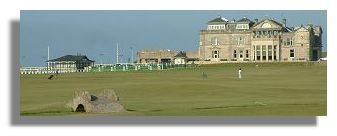
- St Andrew's Heights (St Andrews, Fife and Scotland's patron saint). This community was named for a former golf course in the area, the golf course itself having been named after the famous course at St Andrews in Scotland, shown here.
- Strathcona Park was named after Lord Strathcona (Donald Alexander Smith, born in Forres, Scotland in 1820), a pioneer of the Hudson's Bay Company and the Canadian Pacific Railway.
- Taradale (Highland). Although a place by this name occurs only in Scotland and not elsewhere in the British Isles, the name of this Calgary neighbourhood possibly has no real connection with Scotland since it was named after the developer's wife, Tara.
- West Hills (Angus; also Westhills in Aberdeenshire, Dumfries & Galloway and Renfrewshire). The fact that West Hills is in the western half of Calgary probably suggests a purely descriptive origin of the name.
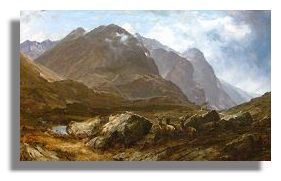
Some of the following subdivisions and neighbourhoods are also likely to have a direct or indirect Scottish connection, but these names can be found in other parts of the British Isles as well:
- Greenwood (Scottish Borders, Moray and South Lanarkshire) also in England and Ireland.
- Haysboro (Hayshead in Angus, Hayside in Scottish Borders, Haysmuir in East Ayrshire, Haystack in Fife, Hayside in Scottish Borders, Haysike in Scottish Borders, Hayston in Fife and East Dunbartonshire, Hayston Hill in Angus and Haystoun in Scottish Borders) there are also many Hays in England, Ireland and Wales. The neighbourhood was actually named after Harry Hays, mayor of Calgary from 1959 to 1963. Hays is an English family name, which reduces the likelihood that the name of this neighbourhood has any connection with Scotland. The tartan shown here is Hay.
- Highfield (Aberdeenshire, Argyll & Bute, East Ayrshire, East Lothian, Highland, North Ayrshire, South Ayrshire and South Lanarkshire) but found even more commonly throughout England. Which of the many place names in Scotland or England gave its name to the Calgary neighbourhood has not been established.
- Lynnwood (Scottish Borders) and Lynnwood Ridge by association; there is also a Lynnwood in Cumbria, England, as well as many other English place names containing the word Lynn, e.g. King's Lynn, South Lynn. The origin of the name of the Calgary neighbourhood is uncertain.
- Mount Pleasant (Aberdeenshire, Argyll & Bute, Scottish Borders, Dumfries & Galloway, East Ayrshire, Fife, Highland, Moray and the Orkney Islands) also all over England, Ireland and Wales, as well as Australia, Canada and the USA it would seem.
- Parkhill (Aberdeenshire, Angus, Scottish Borders, Fife, Inverclyde, Perth & Kinross, South Ayrshire) plus numerous places in England, spelt Park Hill.
- Southview (Shetland Islands, spelt South View) but far more commonly found in England, usually spelt South View.
- Southwood (Perth & Kinross) but far more common in England, and also found in Wales. Because Southwood is situated in south-west Calgary, its name is probably purely descriptive.
- Sunnyside (Aberdeenshire, City of Glasgow, Dumfries & Galloway, East Ayrshire, East Lothian, Fife, Perth & Kinross, North Ayrshire, Orkney Islands, Scottish Borders, South Lanarkshire) also in England but not as commonly as in Scotland which probably says something about the premium placed on sunshine in Scotland! The Calgary neighbourhood apparently received its name from its geographic position, the 'sunny side' of the River Bow. It is nevertheless still possible that the choice of name may have been inspired, in part, by the popularity of the name in Scotland itself.
- West Springs - there is a place called Springs in East Ayrshire as well as in Lancashire, England. Because West Springs is situated in south-west Calgary, its name is probably purely descriptive.
- Woodlands (Aberdeenshire, Argyll & Bute, Scottish Borders, Dumfries & Galloway, Fife, Highland, Perth & Kinross and South Lanarkshire) also all over England and is found in Ireland and Wales as well.
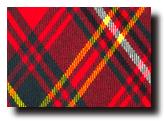
A final category of neighbourhood names comprises places that can be found in Scotland but which, in Calgary's case, definitely or most probably have no connection with Scotland.
- Burns Industrial - the name Burns is found in Aberdeenshire, Dumfries & Galloway, Scottish Borders and the Shetland Islands and of course there’s also Robert Burns, the Scots poet. The Calgary neighbourhood was actually named for Senator Patrick Burns, an early entrepreneur who established the first meat packing business in Calgary. Patrick Burns (1856-1937), one of Canada’s wealthiest entrepreneurs, was born in Oshawa, Ontario, his parents having come from Ireland. The family changed their name from O’Byrne to Byrne, and then Burns. Whilst the name Burns is typically Scottish, the link with the Calgary neighbourhood is actually Irish rather than Scottish.
- Arbour Lake (Arbour in Argyll & Bute) also in England. The Calgary community was actually named after Arbor Lake, Newport Beach, California, the developer choosing to use the British spelling.
- Coral Springs (there is a Coralhill in Aberdeenshire, Coral Beaches in Highland and Coral Cottage in Moray). Although 'Coral' as an element in place names occurs in Scotland, but not elsewhere in the British Isles, the name of the Calgary neighbourhood appears to have no connection with Scotland. Instead, the link is with the United States, the name being chosen by the township developer "to give a Florida image to its lakeside community." (Humber, 1994, Vol II, p. 48).
- Elbow Park (there is an Elbow in Fife) also three places in England with Elbow as an element in the name. The origin of the name is not British, however. The neighbourhood takes its name from the Elbow River, so named because a river bend resembled that of a bent elbow.
- Evergreen Estates (Evergreen in Moray) also Evergreen Hill in England. The township developer chose the name because of the abundance of evergreens in the area, and the pleasant connotations of the name. There is therefore no apparent connection with either Scotland or England.
- Garrison Woods (there is a Garrison in Stirling) also Garrison in Northern Ireland and three places in England with the element Garrison in the place name. The name of this Calgary neighbourhood has no connection with Scotland or any other place in the British Isles since its name is derived from the fact that the military once occupied this site, formerly known as Currie Barracks Private Married Quarters (Charlene Vickers, personal communication). Streets in the neighbourhood (which is regarded as one of the most beautiful neighbourhoods in Calgary) are named after WWI battles fought by Canadian Forces.
- Hawkwood (South Lanarkshire) also in England. This neighbourhood was actually named for a dairy farming family who came to Alberta from England in 1913, and therefore has no connection with Scotland.
- Huntington Hills - there is a Huntington in the Scottish Borders and East Lothian but Huntington is also found all over England. This Calgary neighbourhood, established in the 1960s, was actually named after Huntington Harbor, a suburb of Greater Los Angeles, California.
- Inglewood (Clackmannanshire) also in England. It has been speculated that this Calgary neighbourhood may have taken its name from the well-known district in Los Angeles, California.
- Montgomery - Montgomery/Montgomerie is a Scottish surname, of Norman origin. Montgomery is also the name of a town and a former county in mid-Wales (again of Norman origin). The name of this Calgary community has no connection with either Scotland or Wales since it honours Field-Marshall Montgomery, 1st Viscount Montgomery of Alamein, who was born in London and whose ancestry was Anglo-Irish.
- North Glenmore Park - there are several places called Glenmore in Argyll & Bute and Highland as well as one just across the border in Cumbria. Glenmore is also found in Ireland, the name being derived from the Gaelic, the meaning of which is 'great valley'. The Calgary neighbourhood actually takes its name from the park which, in turn, was named for the homestead of an early settler from Ireland, Sam Livingston. The connection is therefore with Ireland rather than Scotland.
- North Haven (Aberdeenshire and Shetland Islands) also in Wales. However, it appears that the name was chosen "strictly for its appeal - a haven on the north side of the city." (Humber, 1994, Vol. II, p. 125).
- Riverside (Stirling) also in England and Wales. The name of this community appears to be simply descriptive of its location on the north side of the Bow River.
- Temple (Aberdeenshire, City of Glasgow, Midlothian and Renfrewshire) also in southern England. This community actually takes its name from a mountain in the Canadian Rockies.
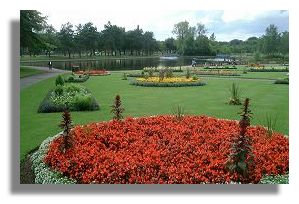
- Victoria Park (City of Glasgow) also all over England. This neighbourhood takes its name from the Calgary exhibition grounds, named in honour of Queen Victoria in 1889. Victoria Park in Glasgow (shown here) was also named after Queen Victoria.
The strong Scottish influence on the development of this young city (Calgary was established as recently as 1875) is further attested by the names of several major roads and highways in Calgary. These are Anderson Road, John Laurie Boulevard, MacDonald Avenue, MacLeod Trail, McKnight Boulevard and Marquis of Lorne Trail. There is also a Scotland Street in the select Scarboro neighbourhood of the city. The surrounding countryside is also rich in Scottish place names, some examples being the towns and villages of Airdrie and Carstairs to the north, Cochrane, Canmore and Banff to the west, Kirkcaldy and Lomond to the south-east and Strathmore to the east.
Acknowledgements:
- Donna Mae Humber (1994). What's in a name…Calgary? (Detselig Enterprises Ltd, Calgary).
- George F. Black (1996). The Surnames of Scotland. (Birlinn Ltd, Edinburgh).
- James D. Scarlett (1975). The Tartans of the Scottish Clans. (Collins, Glasgow and London).
- Adrian Room (2003). The Penguin Dictionary of British Place Names. (Penguin Books, London).
- John Ayto and Ian Crofton (Compilers) (2005). Brewer's Britain and Ireland: The History, Culture, Folklore and Etymology of 7500 Places in These Islands. (Weidenfeld & Nicolson, London).
- Darrell Grant, Principal, Brown & Associates Planning Group in Calgary, who supplied information on the origins of the names of several suburbs and information on newly established suburbs.
- Jim Elphinstone (Lac La Biche, Alberta), Jean Kensit (Calgary) and Charlene Vickers (Winnipeg) for information on several Calgary neighbourhoods, their history and the origins of their names.
- Calgary City Map (Rand McNally, 2000).
- Wikipedia - List of Neighbourhoods in Calgary.
- Websites, place name gazetteers and published Ordnance Survey maps of British and Irish cities, towns, villages and counties.
© Ian Kendall
If you wish to contact Ian about his research, his e-mail address is ian.kendall1@bigpond.com.
Melbourne, Australia, August 2004
Revised April 2008.



